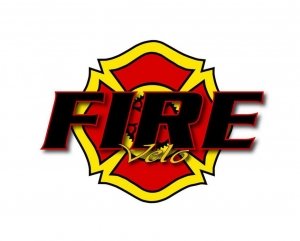Safety Message for Cyclists
Information & Messages
Fire Velo is a “Fire Service” based cycling club, whose mission is to help others! Cycling is not only regarded as an efficient mode of transportation, but also provides numerous benefits in comparison with motor vehicles such as exercise, seeing the beauty of the areas we ride along with opportunities for fun and camaraderie.
The Master Calendar will be utilized to identify Fire Velo Supported Events and Activities. Fire Velo also has a MeetUp account entitled Fire Velo that can be used by members to encourage a more informal opportunity to ride together in a location.
Safety and defensive riding is essential. Be aware of what is happening around you at all times and point out hazards to others that might not be aware of them. Wear protective equipment along with good visibility including a front and rear light so others see you on the road. Cyclist must obey the laws of the road same as vehicles. Be safe but also have an enjoyable time on the path or road you are riding on!
Overuse injuries
According to Wikipedia a study of 518 cyclists, a large majority reported at least one overuse injury, with over one third requiring medical treatment. The most common injury sites were the neck (48.8%) and the knees (41.7%), as well as the groin/buttocks (36.1%), hands (31.1%), and back (30.3%). Women were more likely to suffer from neck and shoulder pain than men.
Many cyclists suffer from overuse injuries to the knees, affecting cyclists at all levels. These are caused by many factors:
- Incorrect bicycle fit or adjustment, particularly the saddle.
- Incorrect adjustment of clipless pedals.
- Too many hills, or too many miles, too early in the training season.
- Poor training preparation for long touring rides.
- Selecting too high a gear. A lower gear for uphill climb protects the knees, even though muscles may be well able to handle a higher gear.
Hazards particular to bicycles include:
- Getting a wheel stuck in a road irregularity, such as a large pothole, railroad track, storm drain, expansion joint, or edge of a driveway. This can cause the bicycle to stop while the rider goes over the handlebars, or it can cause the wheel to travel in a direction different than the rest of the bicycle, which can lead to falling sideways.
- Dooring– running into a car door suddenly flung open into the path of travel.
- Failure of drivers to see or anticipate bicycles riding to the right (in right-hand drive jurisdictions) of traffic, which is especially dangerous when automobiles are turning across the path of travel.
- Proceeding at speed past stopped traffic can result in collisions when automobiles suddenly turn, either leaving the stopped lane or turning across the road in front of stopped traffic (where oncoming bicycles would not be visible due to the stopped automobiles).Lane splitting is specifically illegal in some jurisdictions.
- Falling under the wheels of other vehicles, especially large trucks. (Some trucks are equipped with metal side guards to prevent this.)
- Bicycling in rain or snow can significantly decrease visibility if wearing glasses, goggles, or helmet with wind screen, due to lack of windshield wipers.
- Falling sideways if going too slowly or carrying a heavy, unbalanced load.
- Falling due to lack of traction on slippery surfaces, such as ice, mud, or railroad track.
Bicyclists are also subject to all the same types of collisions as automobiles, without the protection of a metal shell but generally traveling at lower speeds. These risks can be increased when bicyclists violate the rules of the road, such as going the wrong way down a one-way street, failing to stop at a red light, or traveling at night without lights.
